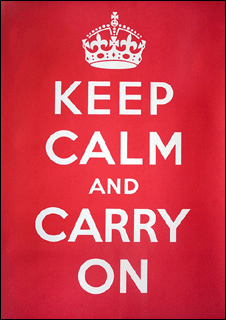It was about 8.30 on a quiet Saturday morning. I was puttering around the house in my pajamas, nursing a cup of coffee- a thoroughly unremarkable morning in what promised to be a thoroughly unremarkable day. Then the phone rang. Adam was on the other end, and when I heard him, I immediately knew that something was terribly wrong. He was supposed to be judging at a debate tournament in Crosby, about 50 miles north of Seabrook, so my immediate reaction was to run through the normal catalog of what would occur to any parent- accident, injury, death, or combinations of the above.
“Have you heard the news?”, he asked ominously. No, I replied, I hadn’t.
“Why? What’s going on?”
“The space shuttle blew up over north Texas.”
“What??”
My foggy consciousness immediately ground to a halt. While I was thankful that Adam was physically OK, I suddenly understood why Adam was so distraught. His best friend’s stepfather was the pilot onboard Columbia. Adam had been invited to go to the launch and the landing at the Kennedy Space Center in Florida, but didn’t go because he couldn’t afford a plane ticket. His friend called him from the landing site, telling him what little he knew, which wasn’t much, but certainly enough to cause alarm. The shuttle was due to land in Florida at 8.16am CT, but it never arrived.
 It was Febuary 1, 2003, a Saturday morning like any other in southeast Texas. As I tried to process the news my oldest stepson was relaying, I went numb, and I have no recollection of the rest of our conversation. I turned the TV on to discover that every channel was awash in the news that the Shuttle Columbia had blown up over east Texas, strewing debris over a wide area and bringing the tragedy almost literally to our doorstep.
It was Febuary 1, 2003, a Saturday morning like any other in southeast Texas. As I tried to process the news my oldest stepson was relaying, I went numb, and I have no recollection of the rest of our conversation. I turned the TV on to discover that every channel was awash in the news that the Shuttle Columbia had blown up over east Texas, strewing debris over a wide area and bringing the tragedy almost literally to our doorstep.
At the time, I lived in Seabrook, a small town on the Texas Gulf Coast about halfway between Houston and Galveston. Seabrook’s a thoroughly unremarkable Texas small town, except for the number of NASA employees who call it home. The Johnson Space Center is four miles away, and it dominates the Clear Lake area, which encompasses Seabrook, Nassau Bay, and parts of southeast Houston. NASA is a huge presence in the community, so the shuttle program- and Columbia’s explosion- was no abstract concept. The astronauts who died were members of the community. Many had children who attended Clear Lake High School with both of my stepsons. Columbia was piloted by Willie McCool, the stepfather of my oldest stepson’s best friend; I’d had a short, completely unremarkable phone conversation with him a couple years earlier. Anyone who lived in the Clear lake area had a connection of some sort with NASA. The seven astronauts were part of us. Over the years, shuttle missions had become so frequent and unremarkable that we’d come to take them for granted, but there was no mistaking the role NASA played and the impact it had on the Clear Lake community.
The Columbia tragedy was no abstract concept; this one had hit us where we lived. Literally.
“We waited for the shuttle to land, and it never came….”….
As I write this, at 1145am CT, we all have seen the video clip from Dallas’ WFAA endlessly. At an altitude of 200,000 feet, and at an airspeed of 12,500 MPH, the shuttle looks as if simply broke apart. The shuttle’s last communication with Houston Mission Control was at 8am. Seven astronauts were aboard. No one really knows anything, but there are plenty of talking heads holding forth on this tragedy. I suppose they have to fill the programming time with something, but I am sick to death of watching seven astronauts repeatedly blow up, ad infinitum, ad nauseum. And yet I continue to watch, hoping against hope that there will be good news to follow.
Adam had been particularly excited about this shuttle mission. He had a very real and very personal connection, and he had a mission T-shirt and stickers in his car. I feel for his friend, who was waiting at the landing site and still thinks his father may have survived. No one should have to deal with losing a parent in such a violent and very public manner.
I spent most of that Saturday at the entrance to the Johnson Space Center. It quickly attracted locals and news crews from around the area. Over the next few days, it became a gathering point for national and international media, tourists, pilgrims, and even Fred Phelp’s merry band of inbreds from the Westboro Baptist Church. No one (except for Phelps’ creepy family) really knew what to do, only that being at JSC was somehow comforting as we tried to deal with a tragedy of unimaginable scope.
I’ve become coming through the WWJD archives from February, 2003, and it’s as if I’m back in Seabrook trying to process the unimaginable tragedy. The graphics have long since been lost in the move from host to host, but the words are as powerful and evocative as the were then.
Now I just have to prepare myself to see Columbia’s explosion repeatedly time and time again. Ten years later, I’m still hoping for good news- even though I know that possibility has not only long since come and gone, it never really existed…except in my imagination.
